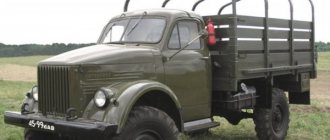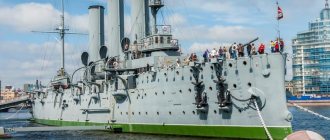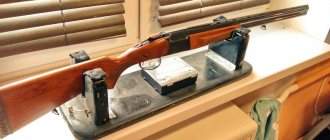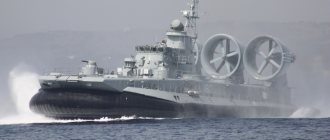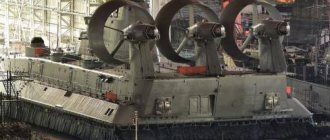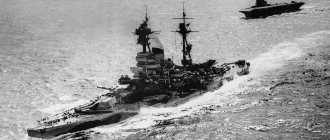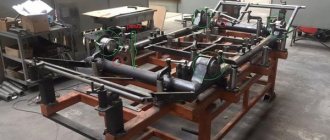At the end of the 1950s, the era of large-scale construction of inexpensive housing, which was called “Khrushchev”, began in the Soviet Union. At the same time, new ZIL-164 vehicles began to appear on construction sites. It is with these trucks that the older generation associates warm memories of their Komsomol youth and the joy of getting new apartments.
In the first half of the 60s, ZIL-164 dump trucks appeared in huge numbers. They carried concrete and other materials for construction. Onboard models were also used to transport workers.
Predecessor and successor of ZIL-164. Differences from ZIS-150
ZIL-164 is a two-axle truck created on the basis of the ZIS-150 at the Likhachev Plant, which was in mass production from the autumn of 1957 to the end of 1964 (since 1961 it was a modernized version of the ZIL-164A) . There is one drive axle, rear.
This car was not much different in appearance from its predecessor (only with vertical slots-blinds of the radiator grille, and not horizontal ones). However, it had significant differences in design: a reinforced frame, a more powerful engine with an advanced carburetor, telescopic shock absorbers, etc.
From the ZIS-150, ZIL-164 also differed in the installation of an aluminum cylinder head instead of a cast iron one, increased rigidity of the wing mounting brackets, and a different hood fastener; a new heater and a system for blowing windshields with warm air. A new radiator was introduced with an increased cooling surface with 190 cooling plates (versus 125 on the ZIS-150) and a reduced pitch between them.
ZIS-150.
The wings of the ZIL-164 were raised by 20 mm compared to the ZIS-150. Accordingly, the height of the hood sides became smaller, the design of its fasteners and their fastening changed, and the wing brackets and their installation locations on the wings and frame side members also changed.
Side member reinforcements were installed on the ZIL-164 frame. The mounting locations for the front leaf spring suspension and front tow hooks have changed. The front suspension became fourteen-leaf, and a reinforced additional spring plate was installed in the rear suspension.
ZIL-164.
If you trace the “pedigree” of the ZIL-164 earlier, then its next ancestor can be called the three-ton ZIS-5. A replacement for this vehicle, which was created on the basis of American trucks from the 20s, began to be prepared back in the late 30s, but the war crossed out these plans, and the ZIS-150 went into mass production only after the Victory.
The successor to the ZIL-164 in the plant’s production program was the legendary
ZIL-130
. The ZIL-130 model was being finalized and prepared for launch on the factory conveyor, and at the same time, the ZIL-164A modification was launched into mass production - with a new gearbox and single-disc clutch from the ZIL-130, as well as a hand brake, driveshafts, telescopic shock absorbers, brake crane also from ZIL-130.
The ZIL-164 was never called a “ZIS” (as is erroneously stated in some articles). The plant was named after Likhachev in June 1956, two days after the death of the famous director of the enterprise, who managed it from 1926 to 1950. And the ZIL-164 entered production in October 1957.
Device
ZIL-164 received a riveted stamped frame, consisting of two beams with a channel section, which were connected by a steel cross member. The longitudinal beams had a variable cross-section in width and height. Tow hooks and the front bumper were bolted to them. On the first modifications of the truck, a U-shaped bumper was installed. The front cross member was used to mount the radiator and front engine mount. The rear supports of the unit were attached to the front beam from the inside.
The front axle had a suspension with two springs, the rear axle had a suspension with two additional and two main springs, suspended on the frame by means of semi-elliptical springs connected to the rear axle and the front axle.
Engine ZIL-164
The engine of this truck is a carburetor, in-line, six-cylinder, four-stroke, lower valve, with a displacement of 5.55 liters. Compression ratio – 6.2. The maximum engine power is 100 horsepower, with a crankshaft speed of 2800 rpm.
The engine name is the same: ZIL-164. A gas tank with a capacity of 150 liters with a mesh filter in the filler neck is located on the left side member of the frame. Standard fuel is A-66 gasoline.
The engine cylinders are located in a single block, which is cast from cast iron along with the crankcase. The plane of the crankcase connector is located below the axis of the crankshaft. There is a water jacket around the cylinders in the block. On the engine block there is a common cylinder head with a water jacket mounted on a gasket, in which the combustion chambers are located. The head, made of aluminum alloy, is secured to the block with bolts and studs.
The flat bottom pistons are made of aluminum alloy. Three compression rings and one oil scraper ring are installed on the top of the piston. The crankshaft is made of carbon steel, and its journals are surface hardened by high-frequency currents. In the engine, the shaft rotates on seven bearings, which have thin-walled steel liners with Babbitt filling. The flywheel is attached with six bolts to the flange at the rear end of the crankshaft.
At the front of the crankshaft, a steel timing gear, an oil deflector and a fan drive pulley are secured to a key. A stamped steel pan is attached to the engine crankcase below with gaskets.
The camshaft, cast from carbon steel, is mounted on four Babbitt-filled steel bushings. In the middle part of the shaft there is a gear for driving the oil pump and ignition distributor, and in the rear part there is an eccentric for driving the fuel pump; in front is a cast iron gear that meshes with the crankshaft gear. The power unit is mounted on the frame on three supports, using rubber pads.
The ZIL-164 engine lubrication system is combined: the main and connecting rod bearings of the crankshaft, camshaft bearings, camshaft gears and the distributor drive shaft are lubricated with oil under pressure; Oil is supplied to the remaining rubbing surfaces by splashing and gravity flow. Oil filtration is double.
In the ZIL-164A car, the engine is equipped with a flywheel adapted to work with a single-plate clutch. Also, the MKZ-K-82M carburetor was installed on the engine of the new modification, which was completely interchangeable with the previous MKZ-K-82, as well as a new high-performance fuel pump without a sump, unified in mounting points with the previous pump. The productivity of the new pump was 125 l/h - versus 60 l/h for the old one. The K-82 and K-82M carburetors were advanced and modern in design and had mechanical speed limiters.
A radiator fan with an increased blade angle was installed on the ZIL-164A engine, instead of the previously used one with an angle of 300 degrees, as well as a new fan casing. In place of the tubular-plate radiator, a tubular-tape (snake) radiator was mounted, which was completely interchangeable with the old one.
Transmission of a ZIL-164 truck
The ZIL-164 car was equipped with a dry double-disc clutch; it was a dry, double-disc clutch. Later, after the modernization carried out in 1961, on the ZIL-164A this clutch was replaced with a single-disk clutch with peripherally located springs.
The truck's gearbox is a three-way, five-speed, inherited from the ZIS-150V. In this case, the fifth gear of the gearbox is an accelerating gear. That is, when it is activated, the secondary shaft of the gearbox rotates faster than the crankshaft of the car engine. The ZIL-164A was equipped with a gearbox from the ZIL-130.
The main gear is double, assembled in a crankcase cast from ductile cast iron with a differential. The rear beam of the drive axle is also cast from the same material. Steel pipes are pressed into the semi-axial sleeves of this beam and secured with locking screws. Their ends serve as supports for wheel hub bearings. The rear hole in the beam is covered with a stamped steel cover, which is bolted to the beam. The final drive ratio is 7.63.
Steering and braking control ZIL-164
The steering mechanism of the car consists of three-ridge rollers, while the globoidal worm is mounted in the crankcase on tapered roller bearings, and the roller rotates on two needle bearings.
The truck's braking system includes a pneumatic foot brake acting on all wheels and a manual central transmission brake. ZIL-164 pneumatic brakes are distinguished by their high efficiency with low pedal pressure, which significantly facilitates the process of driving.
The brake system of a truck tractor intended for use with a trailer was equipped with a dispensing valve for connecting the trailer brake mechanism.
Application of the machine
The use of ZIL-164 vehicles was extremely intensive. An indirect confirmation of this fact is that to date it is very difficult to find even an emergency truck of this model - the vehicles were worked until they were completely worn out.
It must be taken into account that the “finest hour” for the ZIL-164 was the end of the 50s and almost all of the 60s. This was a time when large-scale residential and industrial construction was taking place in the USSR. The need for all types of trucks was simply enormous - and in many ways it was satisfied by the “transitional” ZIL models, since the newer ZIL-130 had just begun to appear on the roads.
A significant part of these vehicles was sent to the armed forces. The army had previously used the ZiS-150, which greatly facilitated the practical development of the new truck, which had a rich “legacy” left from its predecessor - a whole family of various specialized superstructures.
All that remains of the LAZ-690 military truck crane based on the ZIL-164
In particular, the following vehicle options were used:
- PRM-54 – mobile repair shop;
- TZ-150 – fuel tanker;
- ATs-4 – tank truck;
- APM-90 – airfield searchlight installation;
- LAZ-690 – truck crane;
- PLG-1 – mobile laboratory for testing fuel quality;
- DDA-2 – disinfection and shower unit.
In addition, ZIL-164 trucks were used as mobile command posts, vehicles for providing technical assistance and radio communication vehicles. In engineering units, “dump” modifications were widely used.
It is noteworthy that the ZIL-164 was used not only in the Soviet army, but also in the Finnish armed forces. The military sometimes called this vehicle “Zakhar” - that is, the same informal designation that was typical for the honored veteran of the Great Patriotic War, the three-ton ZiS-5 truck. Some ZIL 164 were subsequently removed from military storage and transferred to the “national economy”, and some copies were sold to private individuals.
History of creation
The ZIL-164 truck is a kind of “transitional model”. Theoretically, it could have been created back in the 40s of the last century, but, on the other hand, there were some chances that such a car would never appear on the roads of the Soviet Union.
The immediate predecessor and prototype of this truck was the ZiS-150, the design of which began before the Great Patriotic War, in the late 30s. At first it was assumed that this vehicle would be called the ZiS 15 and would replace the gradually aging ZiS-5. In 1938, several prototypes of the new car were made, but the test program remained unfinished.
ZiS-150 - the immediate predecessor and prototype of the ZIL-164
During the war, Soviet engineers had the opportunity to familiarize themselves with various examples of foreign trucks supplied to the USSR under the Lend-Lease program. This significantly influenced, if not the design, then the appearance of the ZiS-150, which eventually became similar to the International Harvester K-7 made in the USA.
It was assumed that the ZiS-150 would be replaced on the production line by a new promising model, the development of which began back in 1953. Since, as part of the fight against the “cult of personality,” the plant named after Stalin, starting in 1956, became the plant named after Likhachev, this vehicle subsequently became widely known as the ZIL 130. The creation of this new truck did not proceed as quickly as we ourselves would have liked. designers, which led to the appearance of the ZIL-164.
In fact, this car was an improved version of the ZiS-150. External differences were minimal, but the design underwent quite significant modifications. The list of main changes is as follows:
- The supporting frame has been significantly strengthened. The strength of both side members, as well as the three cross members, has been increased;
- Springs were used, assembled from fourteen layers of sheet steel;
- A new rear axle has been installed;
- The dashboard has been changed, both in layout and in the composition of the equipment.
Truck tractor ZIL-MMZ-164N
Serial production of such vehicles began in 1957, and along with the base model, several different modifications were produced simultaneously:
- ZIL-164D. It differed from the original version by special shielding, which prevented the creation of interference during the switching on and operation of electrical devices (ignition, lighting devices);
- ZIL-164R. A machine used for transporting goods in trailers and semi-trailers. The body is of a conventional design, wooden, all three sides are reclining;
- ZIL-MMZ-164N. A truck tractor, the modification of which was carried out in Mytishchi, at a local machine-building plant.
In addition, a special version was produced, the ZIL-164G. It was a chassis that could be used to create dump trucks. One of these machines, known as the ZIL-MMZ-585K, was actively used in agriculture, while the ZIL-MMZ-585I was used in construction. Tipping mechanisms and steel bodies for dump trucks were made at a plant in the city of Mytishchi.
In 1961, mass production of an even more “transitional” version of the ZIL 164A began. It differed from the original truck not only by a slightly more powerful engine, but also by “borrowing” a number of components and assemblies developed for the promising ZIL-130. In particular, these cars received new manual transmissions and the front suspension was improved.
Submodifications created using ZIL-164A were designated as follows:
- ZIL-164AR. A machine used for transporting trailers and semi-trailers. A distinctive feature of this option is a motor with increased power to 109 horsepower;
- ZIL-164AD. A complete analogue of the “shielded” ZIL-164D;
- ZIL-MMZ-164AN. Truck tractor equipped with a 109 hp engine.
Dump truck ZIL-MMZ-585L
The updated “dump chassis” received the designation ZIL-164AG. On its basis, the ZIL-MMZ-585L (option for builders) and the ZIL-MMZ-585M (dump truck for agriculture) were made.
In addition, there were “gasified” versions of the truck. The first of them was called ZIL-156A. It was mass-produced for four years, starting in 1957, after which it was replaced by the ZIL-166. A pilot batch of ZIL-166A vehicles, designed for the use of liquefied gas, was also produced.
Technical specifications in numbers
- Length – 6,700 m; width – 2.47 m; cabin height – 2.18 m;
- Wheelbase – 4 m;
- Ground clearance under the rear axle – 265 mm;
- Ground clearance under the front axle – 325 mm;
- Track: front wheels – 1.7 m, rear wheels – 1.74 m.
- Maximum speed – 75 km/h.
- Fuel consumption at a speed of 40 km/h is 27 liters per 100 km.
- Fuel tank capacity – 150 liters. Power reserve – 550 km.
- Curb weight – 4100 kg, gross weight – 8250 kg.
Options for ZIL-164
- ZIL-164 and ZIL-164A (since 1961) – flatbed trucks: wooden cargo platform with three opening sides.
- ZIL-164R and ZIL-164AR (since 1961) - flatbed trucks with uprated engines increased to 109 hp. power and MKZ-K-84 carburetors, were designed for continuous operation with trailers weighing up to 4.5 tons.
- ZIL-164D and ZIL-164AD (since 1961) – flatbed trucks with shielded electrical equipment.
- ZIL-164G and ZIL-164AG (since 1961) are universal chassis for installing other cargo platforms, superstructures and special equipment.
- ZIL-MMZ-164N and ZIL-MMZ-164AN (since 1961) - truck tractors with forced engines increased to 109 hp. power and MKZ-K-84 carburetors. MMZ is the Mytishchi Machine-Building Plant.
- ZIL-MMZ-585I and ZIL-MMZ-585L (since 1961) – construction dump trucks.
- ZIL-MMZ-585K and ZIL-MMZ-585M (since 1961) – agricultural dump trucks.
- ZIL-156A , ZIL-166 , ZIL-166A (since 1961) - flatbed trucks designed to operate on liquefied gas.
Gas-cylinder modifications were equipped with ZIL-166 gas engines with a power of 85 hp. (could also run on 66-octane gasoline, producing 100 hp), MKZ-K-80D carburetors and MKZ-NAMI gas reducers with a strainer.
Gas cylinders were placed under the cargo platform and were divided into two sections: five cylinders behind the cabin across the frame and three along the frame at the rear. This direction was not widely used due to the peculiarities of the economy of the Soviet Union: at that time, the production of gasoline was excessive, far exceeding the need for it, and it was an extremely cheap fuel.
The so-called “Kolyma modification” of the ZIL-164 was also produced in the city of Magadan. It was at a local enterprise that a third axle was installed on the ZIL-164, which increased its load capacity and cross-country ability. One of these original three-axle ZIL-164s is installed on a pedestal as a monument in Magadan.
Three export versions of the ZIL-164 were produced: for a temperate climate - ZIL-164E and for a tropical climate - ZIL-164YU .
According to the established tradition and in full accordance with the ironic folk proverb: “Foreigners are like children with us: All the best is for them,” these cars were distinguished by improved interior trim using more expensive materials, more careful assembly using selected components and parts.
The carrying capacity of these vehicles was also higher: 5.5 tons, not 4. The fact is that only special export forced high-power engines (107 hp) were installed on them.
Many ZIL-164 trucks, which were used by the Western Group of Forces of the Soviet Army, were equipped with special bodies produced by the GDR. Fire departments in the cities of the GDR were equipped with fire engines based on the ZIL-164. Some Soviet motor vehicles produced very unusual special superstructures for utility purposes on the ZIL-164 chassis. For example, an unusual “cassette cement tanker” of an original design went down in history. The first serial tank truck in the Soviet Union for transporting liquefied gas, ATsZHNG-4-164A, was also mounted on a ZIL-164 chassis.
History and modifications
In 1960, a variant with higher cross-country capability, the ZIL-132, was offered, but it did not go into production.
ZIL-131 was produced from 1966 to 1986, in 1986 a modernized version appeared - ZIL-131N. The modernized version was produced both with a carburetor engine (ZIL-131N) and with various diesel engines (ZIL-131N1 and ZIL-131N2). The modernized ZIL-508.10 gasoline engine was distinguished by an increased compression ratio, allowing the vehicle to be operated on higher octane A-76 and AI-93 fuel, and screw inlet ports in the cylinder head. For the ZIL-131 (ZIL-131N) there were main versions of the vehicle (with and without a winch):
- A car with unshielded unsealed electrical equipment was designated ZIL-131A, and since 1986 it was produced as ZIL-131NA.
- The ZIL-131V truck tractor, and the ZIL-131NV, have been produced since 1986. All-wheel drive road train ZIL-137-137B (10 × 10), consisting of a ZIL-137 truck tractor and a two-axle ten-ton semi-trailer with active axles ZIL-137B. Some ZIL-131V army tractors (intended mainly for anti-aircraft missile forces as tractors for transporting missiles) had high-power engines with a ZIL-375 cylinder-piston group.
- For cold climates ZIL-131S, ZIL-131NS, ZIL-131AS, ZIL-131NAS, ZIL-131NVS.
Also, a large volume of production was occupied by the chassis for mounting various special equipment. ATZ-3.4-131, ATZ-4.4-131, ATZ-4-131 fuel tankers, MZ-131 oil tankers, ATs-4.0-131, ATs-4.3-131 tank trucks were produced on the ZIL-131 chassis and a host of others. Standard KUNG van bodies K-131 and KM-131 were developed especially for army versions of workshops and laboratories. Also, some special vehicles based on the ZIL-131 have a total weight exceeding the officially permitted one: for example, the APA-50M airfield mobile unit has a weight of 10950 kg, APA-35-2V - 11370 kg.
Production of the ZIL-131N in Moscow was discontinued in 1994 due to the start of production of the ZIL-4334, but at the Ural Automotive Plant production of the ZIL-131N continued until 2002, where it was replaced by the ZIL-433420. After 2002, the Ural Automotive Plant produced a complete analogue of the ZIL-131N under the AMUR-521320 brand, including one with a diesel engine. The main difference between the ZIL-131N and other ZILs is the ability to install a drilling and crane rig (BKM-313) on it, with a drilling depth of 3 m. There is also a ZIL-131NA with a BKM-313 rig, which has a drilling depth of 5 m.
Reviews about ZIL-164 cars
For obvious reasons, you can no longer find reviews from drivers who actually worked on the ZIL-164. Those reviews that are found on the Internet are, for the most part, of a nostalgic nature: “My father worked on the 164th at a dairy plant and took it with him on trips to neighboring collective farms” ... “I remember from childhood, in our village on a ZIL-164 they transported grain, loaded 6 tons onto them into bodies with extended sides, and nothing”... etc. ZIL-164 appeared in many Soviet films of the 60s and 70s. Including in cult comedies such as “Operation Y”.
Another type of feedback comes from auto repair shop workers who had to do the work of restoring a ZIL-164 for a private collection. They characterize the truck as a very strong and simple machine, made of materials that are surprisingly durable by today's standards. In particular, the quality of the metal and its painting is surprising. In those days, khaki paint took a very long time to dry. But once it dried, it held on very firmly. The resistance of the metal to corrosion was simply incredible compared to modern ones. The tires of the 60s that were equipped with the ZIL-164 also deserve special mention. This is natural rubber with nylon, the tire of which never cracks, but simply wears out evenly: “three layers of cord are rubbed through, and the wheel keeps moving and moving.”
Salon
1 – parking brake lever; 2 – radiator shutter control handle; 3 – gear shift lever; 4 – direction indicator switch; 5 – windshield washer nozzle; 6 – instrument panel; 7 – windshield washer pedal; 8 – clutch pedal; 9 – foot switch for headlights; 10 – brake pedal; 11 – throttle control pedal.
The steering mechanism of the ZIL-130 was a screw with a special spherical nut plus a piston-rack. The hydraulic booster was built-in. The three-seater cabin is located immediately behind the engine. The seat is adjustable in length, height and backrest tilt. The main options in the cabin included a heater, a windshield wiper with two blades, and a glass washer. For the 60s, the cabin ergonomics are at the highest level. The instrument panel and functional instruments are located very conveniently for the driver. The designers provided two ventilation hatches in the cabin roof. The radiator grille has become a memorable element. The cabin was made of solid metal and had three seats. The engineering staff did a great job, because the car was comfortable and was very different from many Soviet trucks. Drivers received improved conditions for performing their work.
It was much more comfortable to sit inside, because the changes also affected the width - it was increased by 1.2 meters when compared with the ZIL-164 model. Instruments and controls were optimally located in the spacious cabin. In addition, soft seats appeared - for the driver and for passengers (double). The driver's seat could now be adjusted in horizontal and vertical directions. It was also possible to change the angle of the chair back and pillows. It was on the ZIL-130 that the hydraulic power steering wheel debuted. Thanks to this, not only the ease of driving the truck increased, but also its safety - if the front wheel broke, it was easier to keep the truck on the road.


